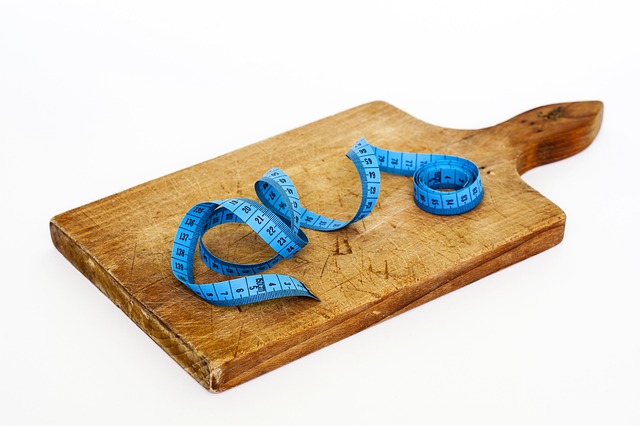Thigh and arm fat freezing (cryolipolysis) is a non-invasive treatment using cold temperatures to break down and destroy stubborn fat cells, resulting in reduced dimensions and improved contouring. This procedure, typically lasting an hour with minimal discomfort, is suitable for busy individuals aiming to achieve a toned upper body without significant downtime. Ideal candidates include those with well-defined fat pads maintaining a healthy lifestyle but struggling with resistant fat cells, such as post-pregnancy or post-weight loss bodies. Side effects like temporary discomfort, redness, and swelling are common; rare severe reactions include blistering or tissue damage. Choosing a reputable clinic and staying hydrated post-treatment enhance results and recovery. Results vary, with improved skin texture and contouring visible over weeks, maintained with healthy diet and exercise. Proper post-treatment care ensures optimal healing, reduces discomfort, and supports long-term outcomes.
Thigh and arm fat freezing is a non-invasive aesthetic procedure gaining popularity for targeted fat reduction. This innovative approach uses cold temperatures to selectively destroy fat cells, offering an effective solution for areas often resistant to diet and exercise. In this comprehensive guide, we explore thigh and arm fat freezing: from understanding the science behind it, benefits, candidate suitability, to post-treatment care and maintenance.
Understanding Thigh and Arm Fat Freezing: A Non-Invasive Approach

Thigh and arm fat freezing, also known as cryolipolysis, is a non-invasive aesthetic treatment gaining popularity for its effectiveness in reducing stubborn fat deposits in these areas. This procedure leverages the power of cold to break down adipose tissue, allowing the body’s natural processes to eliminate it. By targeting specific regions with precise cooling technology, fat cells are selectively destroyed while minimizing damage to surrounding skin and tissues.
Unlike surgical options, thigh and arm fat freezing offers a comfortable, non-surgical alternative. The process involves applying a cooling device to the desired area, causing the fat cells to crystallize and subsequently die. Over time, these treated fat cells are naturally eliminated by the body, leading to reduced fat dimensions and improved contouring. This method is ideal for individuals looking to achieve a slimmer, more toned appearance without incisions or extensive recovery periods.
How Does Arm Fat Freezing Work? The Science Behind It

Arm fat freezing, a non-invasive procedure, targets unwanted fat cells in the arms using cold temperatures. The science behind it involves cryolipolysis, where controlled cooling damages the fat cell membranes, causing them to break down and be eliminated by the body’s natural processes. This method is specifically designed for areas like thighs and arms, offering a safe and effective alternative to surgical procedures.
During the treatment, a device applies cold air to the targeted area, usually lasting about an hour. The process is generally well-tolerated, with minimal discomfort. Over time, as the fat cells are processed by the body, inch loss and improved contouring in the treated areas, such as arms, can be observed. This innovative approach has gained popularity for its non-surgical nature, making it accessible for those seeking to reduce thigh and arm fat without significant downtime.
Benefits of Targeted Fat Reduction for Arms

Targeted fat reduction for arms has become a popular choice among individuals seeking to sculpt their physique. Unlike traditional exercise or diet, which can be time-consuming and often yield limited results, thigh and arm fat freezing offers a non-invasive, effective solution. This method uses cold therapy to destroy fat cells in specific areas, leading to noticeable reductions in arm fat over time.
One of the key benefits is its convenience and minimal downtime. Unlike surgical procedures, freezing fat does not require incisions or lengthy recovery periods. It’s an excellent option for busy individuals who want to achieve a toned upper body without disrupting their daily routines. Additionally, it promotes long-term results, as the destroyed fat cells are metabolized by the body over several weeks, leaving behind a sleeker, more defined arm contour.
Who is a Suitable Candidate for Thigh and Arm Fat Freezing?

Thigh and arm fat freezing, also known as cryolipolysis, is a non-invasive treatment suitable for individuals looking to reduce stubborn fat in these areas. It’s ideal for those with well-defined fat pads who maintain a healthy lifestyle but still struggle with localized fat accumulation. This procedure can be especially beneficial for post-pregnancy or post-weight loss bodies, as it targets the remaining fat cells that prove resistant to diet and exercise changes.
Candidates for thigh and arm fat freezing typically have realistic expectations and understand that this treatment is not a cure for obesity. It’s recommended for people who are generally healthy and maintain a balanced diet but want to address specific problem areas. As with any medical procedure, consultation with a qualified healthcare provider is essential to determine eligibility and discuss potential risks and side effects.
The Process: Step-by-Step Guide to Treatment

The process of thigh and arm fat freezing, also known as cryolipolysis, involves a non-invasive treatment that targets and breaks down fat cells in specific areas. Here’s a step-by-step guide to help you understand what to expect during the procedure.
First, a professional will apply a cooling device to the targeted area, which could be your thighs or arms. This device uses cold temperatures to freeze the fat cells, causing them to rupture and die. During this time, the skin is protected with a numbing agent to ensure patient comfort. After the treatment, the body naturally processes these destroyed fat cells, removing them from the body through waste products. It’s recommended to stay hydrated before and after the procedure to aid in the body’s natural detoxification process.
Safety and Side Effects: What You Need to Know

Arm and thigh fat freezing, like any medical procedure, comes with considerations regarding safety and potential side effects. It’s crucial to understand these before proceeding. The process involves targeted cryolipolysis, where cold is used to break down fatty cells. While generally safe when performed by qualified professionals using FDA-cleared technology, there are risks.
Common side effects include temporary discomfort, redness, and swelling at the treatment area. In rare cases, more severe reactions like blistering or tissue damage may occur. It’s essential to choose a reputable clinic that follows strict safety protocols and provides adequate post-treatment care. Consulting with a healthcare provider before starting any fat freezing regimen is vital to ensure it aligns with your overall health profile and to mitigate potential risks specific to your condition.
Recovery and Results: What to Expect Post-Treatment

After your thigh and arm fat freezing session, it’s normal to experience some temporary discomfort or swelling in the treated areas. This is a natural part of the recovery process as your body reacts to the cold therapy. Most people find that any redness or soreness subsides within a few days, leaving behind smoother, firmer skin. Results can vary from person to person, but you should start noticing a reduction in fat cells and improved contouring over the following weeks.
It’s important to remember that fat freezing is not a weight-loss solution but rather a non-invasive way to reduce localised fat deposits. To maintain your results, a healthy diet and regular exercise routine are recommended. Additionally, some patients may notice enhanced skin tightening effects as collagen production increases post-treatment, contributing to a more toned appearance.
Maintenance and Follow-Up Care for Optimal Outcomes

After your thigh and arm fat freezing treatment, proper maintenance and follow-up care are essential for achieving optimal outcomes. It’s crucial to adhere to any post-treatment guidelines provided by your healthcare professional, such as avoiding strenuous activities or certain cold exposure for a period after the procedure. Staying hydrated and maintaining a balanced diet can also aid in the body’s natural healing process and enhance the results of your fat freezing session.
Regular check-ins with your provider are vital to monitor progress and address any concerns. They may recommend specific exercises or stretching routines to improve circulation and reduce discomfort. Additionally, they might guide you on managing any temporary side effects and offer tips for maintaining a healthy lifestyle to support long-term results.
